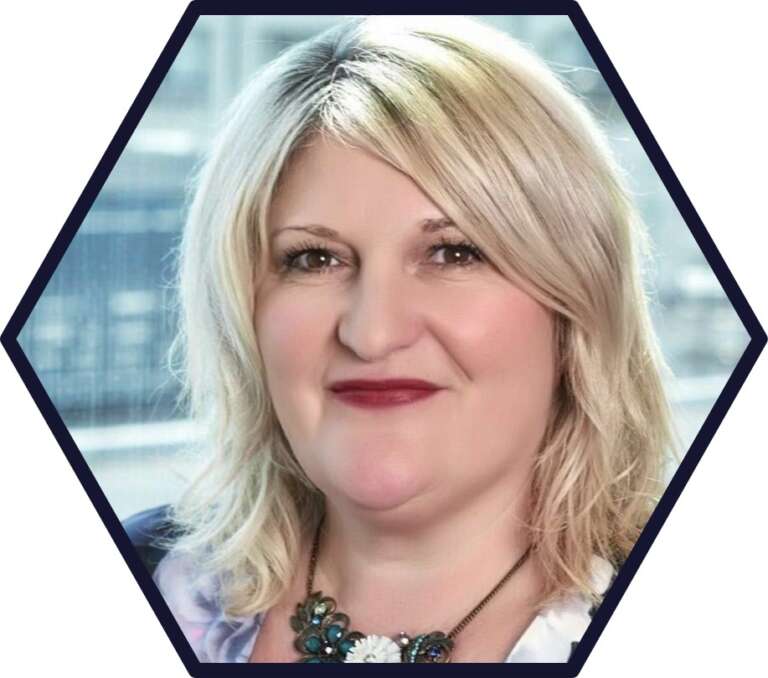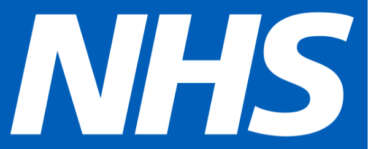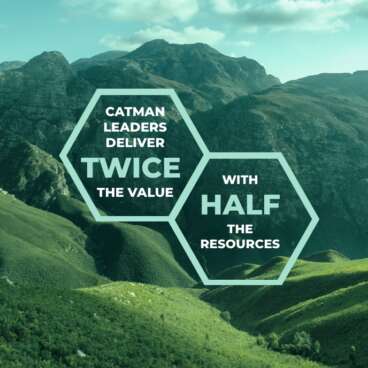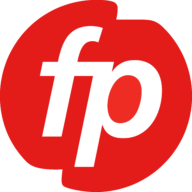
Case study • NHS
Category Management: The golden thread running through NHS spend collaboration
By Future Purchasing |


Jacqui Rock
Chief Commercial Officer at NHS England
Our global category management study recurringly identifies a cross-functional approach to managing similar areas of spend as a catalyst for raising opportunities for business value and consolidation, and, increasingly, collaboration. This outcome is unquestionably evident within NHS England.
Jacqui Rock, Chief Commercial Officer at NHS England has been directing a collaborative approach to public spend since she introduced the NHS Central Commercial Function (CCF) in 2022, and the outcomes to date touch all parts of the NHS.
Building collaboration and consolidating spend is a mammoth task for NHS England given the size and complexity of the NHS’s federated business model. The scale of its commercial activity is huge, with 228 acute trusts, formed into 42 integrated care systems, multiple arm’s length bodies, social care, and so on. Healthcare is the largest area of government procurement spending, and is larger than any other area including Defence, amounting to some £30 billion to £40 billion a year. With 4000 people buying products and services from more than 80,000 suppliers, overseeing procurement best practice is a huge task.
“The NHS is a vast and complex business,” says Jacqui. “The procurement process at NHS England is set up to encourage competition and market innovation, while clearly focusing on improving health outcomes. But obviously, with that size of spend comes a responsibility not just to deliver efficiency savings, but to make sure the NHS uses resources effectively to maximise value for money for the taxpayer. And all of that must support patient outcomes. That’s what makes NHS procurement unique.”
And it calls for a particular formation of teamwork and skill.
Category management is structured to deliver across the organisation
Category management is very much part of a wider, more holistic transformation programme within the NHS rather than being viewed through a single lens.
“This is deliberate,” says Jacqui, “we see everything we do within buying at the NHS ultimately impacting and delivering effective category management. This is important, because to succeed in transforming to an efficient and effective function, you need to look at the entire procurement process and you need to look at delivery. From that perspective comes world-class expertise in category management.”
With 4,000 people buying in a very federated model, The Central Commercial Function, run out of NHS England, brings them all together. It has a number of key service-operated offerings: Commercial Best Practice, Technology and Data, Architecture, Strategy, Governance, Assurance and Process, People and Community, Commercial Strategies, Sustainability and Innovation, Sourcing, Supplier, Category and Contract Management, with a category management approach common throughout.
The recently published Strategic Framework for NHS Commercial covers commercial ambitions and objectives for the next five years. Looking realistically at the NHS and the health spend, it marks a real step change in the way NHS Commercial is moving forward. The vision of that Strategic Framework is to be globally renowned as a commercial function in healthcare, supporting the NHS to deliver world-class patient care and outcomes.
“It’s about driving collaboration across commercial teams so that together we can deliver on NHS priorities, on what we’ve committed to as a profession, while keeping the patient at the heart of everything we do, on leveraging the NHS collective buying power to ensure the best value for money and on providing clear, consistent guidance on how suppliers contract with the NHS. Through this model we’ll raise overall productivity and efficiency above the historical average, and seek delivery on commitments outlined in the NHS long-term plan.”
This strategic framework will be used as a centrally-driven blueprint for supply chain transformation around four key themes:
People: Attracting the best and most diverse commercial talents and connecting commercial professionals to one another.
Digital: Using data as a strategic asset and using its insights to create the greatest value and public trust through greater transparency.
How we work: Simplifying and speeding up the procurement process, removing the unnecessary red tape and bureaucracy and embedding commercial standards and best practice into day-to-day working. Leveraging buying power at scale to strengthen relationships with the supply chain for better patient outcomes.
Influence and scale: Leveraging influence and scale to foster healthy supply markets, develop and shape the market, unlock benefits from innovation, and deliver wider social value and economic benefits through procurement.
“And effective category management is the golden thread that runs throughout the entire strategic framework,” she explains.
The central resources are connected to leverage categories in different ways. Expanding that to local deployment is all about implementation.
Top capabilities for implementation
“Our teams consist of brilliant commercial people with category expertise. The categories we tackle are wide, anything from drugs and clinical consumables through to transport and estates, the list is long as there is almost nothing the NHS doesn’t buy. So we are launching playbooks, offering training and putting the right governance in place for effective category management. And we’re identifying where the particular category skills lie within our in our commercial teams.”
In terms of category management, top capabilities include data and supply market analysis, and influencing and trust-building skills. “What’s really fabulous about our industry is the breadth of skillsets we have, as negotiator, salesperson, influencer or other — as well as knowing the law and understanding process.”
The Strategic Framework brings together the whole commercial community and all those skillsets and gives them a seat and voice at the table. The interventions contained within will be delivered across the NHS by areas that have exemplary skills in buying certain categories.
“In this way, we share our skills and experience and maybe even buy on each other’s behalf,” she explains. “This is important as we consider how we are going to deliver category management and category interventions. We look at where the best practice is and make sure they have a seat at the table with us, like Crown Commercial Service, which delivers common goods and services across the NHS, and NHS Supply Chain, which delivers medical devices and consumables as a centralised core function.
“The strategy isn’t about creating centralised, nationalised buying, it’s about collaboration and finding the most effective and most innovative ways to buy through a commercial procurement community.”

Innovations that complement category management
Other innovations complement the framework initiatives and show how category management is seen within the context of a variety of commercial activities, rather than a standalone operation.
Part of the commercial efficiency initiatives include the Framework Accreditation programme. When reviewing the buying frameworks used by the NHS, Jacqui uncovered more than 1,200 frameworks with variations in product cost and quality. This made it difficult for the NHS to decipher which frameworks offered the best value for money, was a poor use of time and resource for the commercial teams, and left suppliers unsure about which framework they should be on.
Being passionate about innovation, especially within the SME marketplace, she wanted to simplify how their frameworks run across the NHS to make it easier for smaller firms. “While it can be easy for the big strategic players to be on multiple frameworks, that’s not the case for SMEs,” she says.
The ambition of a Framework Accreditation program would reduce those inefficiencies and enable the NHS to further leverage scale and national pricing. “We spent a lot of time looking at the data to identify framework hosts,” she explained. “NHS commercial teams will now buy only from accredited framework hosts. This removes duplication and makes the landscape more level to navigate, leading to better value. We will then look at those frameworks by category, develop a framework category taxonomy and generate the standards needed to undertake that category-level framework. The estimated savings, as a result of having better standardised frameworks is projected at £100 million over the project period.
“The point is,” she says, “you can make significant savings just by getting a grip on the categories in your frameworks.”
But, as with all initiatives, you have to get buy-in …
It’s all about data
Jacqui explains: “We have been implementing an end-to-end procurement solution across all commercial teams. For the first time in NHS history, we have a full view of what we spend, where we spend it and with whom. Now, this is really exciting, because as a result of that data I’m able to look at variations in cost and in what’s being delivered by the same supplier. Our size means we have suppliers that might have hundreds of different contracts with each Trust or primary care provider. So we’ve been able to look at that holistically.
“When you are able to articulate that data to the CFO and stakeholder landscape, when you can explain how we spend the money, and where the inefficiencies are, and what we need to do about it, that’s how you get the buy in,” she says.
The same applies to category interventions.
One example is the work Jacqui and team carried out on stents. The quantities and types being bought varied greatly. Being able to show that data to the clinicians, and get their clinical lens on it, meant they could bake their informed perspectives into the category strategy.
All stakeholder parties that NHS Commercial interacts with, including category teams, are involved to get that wider business requirement perspective, from the multiple trade bodies of the Cabinet Office, through to the doctors and consultants themselves. “By consulting and involving everyone is how we form our category strategies for each of our products,” she says.
Engagement is also key
“When we launched the Strategic Framework, we asked the community to adopt this blueprint as their direction of travel for commercial, which is important when you’re looking at that entire stakeholder landscape. But we had to structure an engagement program, which included running regular national procurement forums. Now, each integrated care system (ICS) has a dedicated procurement lead which may have multiple Trusts under them. Getting those ICS procurement leads into a room with representatives from right across central government means we can collectively and collaboratively look at that whole stakeholder engagement. They discuss face-to-face the priorities, challenges, categories, innovations, and so on with their peers and their teams.
“So I really see it as my job to widen the stakeholder net and engagement with the NHS. This whole programme of engagement keeps NHS Commercial up the agenda, because it’s a huge volume of spend, and people should be aware of how we are managing it.”
Of course how and where money is being spent has long been a topic of interest for the business. But Jacqui has seen a shift in how it’s represented. “We are now actually talking about the NHS as a whole: how we can leverage that spend, how we can shape innovation, how we can create new markets, how we use NHS commercial power to deliver better patient outcomes and for the greater good – and category management is a key part of those ambitions.”
It all needs change management
Change management is essential for all transformation, but there needs also to be a change in the mindset of the people developing the categories, since having clinical representatives on the team is a leap forward in what and how they buy.
How they drive this change is by validating a plan, then delivering these nationally-led category interventions for the prioritised spend.
One example lies in the energy category.
“Price hikes have been painful for everyone,” says Jacqui, “and they hit the NHS hard. So it was logical to look into how we actually buy energy. Again, we got all stakeholders in a room and explained the position. We had over 200 energy contracts in place across the country, all under different agreements, all with varying value and purchasing strategies. When we started looking at the numbers, and the opportunities, we collectively agreed that the way that we bought energy was not efficient. This became one of our first category interventions.”
Jacqui announced the intention to transition to a centralised energy purchasing basket to find efficiencies across the NHS. NHS England worked with Crown Commercial Service to shape an energy purchasing agreement, with everyone’s buy-in, specifically for the NHS.
“The savings on this initiative are going to be between £60 million and £100 million a year, she explained. Benefits also include, greater price stability, resilience to external events, increased budget, predictability, bulk discounts based on the consumption, volume, etc. It’s a significant amount of money saved just by bringing everyone together, simplifying the process and buying through the consolidated initiative. It’s a real example of how we can use NHS purchasing power.”
Looking forward
Arriving at standardisation across a very siloed operation is always going to be a challenge. But with a robust engagement program that encapsulates all key stakeholders, best practice and reducing the barrier of size and scale, the team is succeeding, and Jacqui puts a lot of it down to data.
“Ultimately it’s about telling the story and delivering the message that we’re better together. Data has helped us do that, but you have to ensure you have the right access to data and know what to do with it,” she says. “When we work as one NHS with a category approach, we will realise savings efficiencies, we will open the door to creating dynamic markets and leverage every spend in existing markets. And this is really exciting in a very exciting year for public procurement.”

This case study is taken from
“Influence the Future” – The 2024 Global Category Management Report
Equip yourself with the knowledge and tools needed for tomorrow’s challenges.
- Strategic Focus: Gain insights into top practices that drive improvements.
- Value Delivery: See how leaders maximise value beyond expectations.
- Team Efficiency: Deliver twice the value, with half the resources.
- Industry Benchmarking: Assess how you measure up to industry standards.
- Expert Knowledge: Extract actionable advice from leading global case studies.
Related Expertise
Supplier management
Our supplier management approach combines excellent tools and techniques across the full range of activity, from segmentation, through performance measurement and improvement and through to relationship strategy development.
Category management
Excellence in Category Management gives multipliers of value delivery compared to less effective programs. Our approach, delivers a high performing team and process which provides sustainable value over years rather than months.
negotiating for procurement
Our approach to procurement negotiation helps teams to improve performance, track their progress, measure success and secure rapid payback to programme costs. It is based on four principles…

Future Purchasing
If you want to get more value out of your procurement spend, or you just want to know more about us, request a callback above or send us an email and we will come straight back to you.




